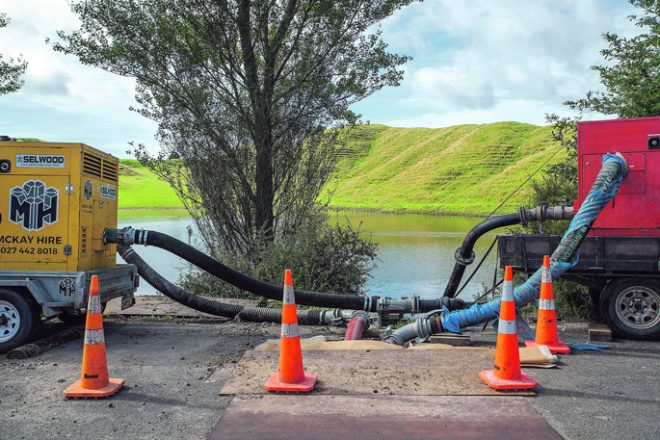Công việc sẽ sớm bắt đầu với một dự án thoát nước trị giá 200.000 đô la trên đường Manawahe ở Vịnh Plenty, New Zealand. Dự án này nhằm bảo vệ khu vực khỏi lũ lụt. Ủy ban quy hoạch và cơ sở hạ tầng của Hội đồng Quận Whakatāne đã phê duyệt quỹ cho dự án tại một cuộc họp gần đây.
Vào năm 2022 và 2023, lượng mưa lớn đã gây ra lũ lụt đáng kể trong khu vực, dẫn đến việc đóng cửa đường Manawahe trong một tháng vào năm 2023. Hai ngôi nhà trên đường bị hư hại nặng đến mức không thể ở được, và chủ sở hữu phải dựa vào các khoản thanh toán bảo hiểm. Hơn sáu ha đất dọc theo con đường đã bị ảnh hưởng trong vài tháng vì khu vực ngập nước không có lối thoát nước tự nhiên.
Ủy ban đã chọn phương án rẻ nhất trong số một số lựa chọn để ngăn chặn lũ lụt trong tương lai. Kế hoạch này liên quan đến việc lắp đặt một cống bên kia đường, kết nối với một hố ga. Ống hút có thể được sử dụng để loại bỏ nước, sau đó sẽ được xả vào đất của chủ sở hữu tài sản bị ảnh hưởng khi cần thiết. Các lựa chọn khác được xem xét được ước tính có giá từ 1 triệu đến 2 triệu đô la.
Theo một báo cáo, lượng mưa lớn gây ra lũ lụt dự kiến sẽ xảy ra 46 năm một lần. Ủy ban cũng biết rằng chi phí sửa chữa những con đường bị hư hại do bão trong huyện vào năm 2022 và 2023 vượt quá 1,4 triệu đô la. Cơ quan vận tải New Zealand Waka Kotahi sẽ chi trả phần lớn chi phí, với dự trữ bão của hội đồng bao gồm 450.000 đô la còn lại.
Công việc tiếp tục sửa chữa các con đường khác trong quận, bao gồm cả trên Đường Braemar và Đường Stanley. Bất chấp chi phí sửa chữa này, giám đốc vận tải của hội đồng, Ann-Elise Reynolds, cho biết quỹ dự trữ phải đủ.
Tuy nhiên, đã có những câu hỏi về việc liệu hội đồng có thể ngăn chặn thiệt hại trên Đường Braemar hay không nếu họ phản ứng nhanh hơn với các báo cáo rằng cống đã bị chặn. Reynolds giải thích rằng hội đồng đã giải quyết một số vấn đề do lượng mưa lớn và đã phản ứng nhanh nhất có thể. Cô nói thêm rằng cống có hư hỏng bên trong, gây ra sự trượt khi nước cố gắng vượt qua nó.





























































